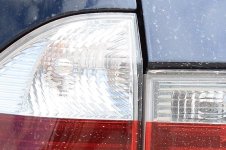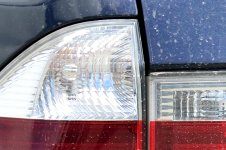This confuses me. If a DX is just a smaller sensor, then does DX really "reach out" better? Or is it the same as shooting FX with the exact same lens and then just cropping in post? This is a genuine question; I'm not just trying to make a point. Nikon used this same argument in their D600 promotional video, that being able to switch to DX helps you reach out when it's needed. I have a D600, and the default setting for the front Fn button was FX/DX swap, which I accidentally hit while shooting some elk in Wyoming, and I swear those DX photos look really great when they go by on my screen saver.
ETA: I just read the article that WayneF linked, and it said DX is just pre-cropping an FX shot. IOW, there is no difference between shooting DX versus shooting FX and cropping in post. Does anyone have a counter-argument? I could get that Nikon puts more MP in a dedicated DX sensor than in the DX crop portion of an FX sensor, for example.
DX is a smaller sensor, and yes, it is just about precropping the lens image to be smaller. Any "reach out" or telephoto effect is simply because then we must enlarge the smaller image more, and when same size again, it does give a telephoto effect. Any post cropping would give the same telephoto effect (when similarly enlarged, magnified).
However, the DX sensor is built with more pixels in that smaller area.
So a 24 megapixel D610 FX image cropped to be DX is only 10 megapixels. Any post cropping would be the same.
A 24 megapixel D7100 DX image is 24 megapixels, in this smaller area. We are subsequently enlarging the lens image 50% more (degrading it more), but there is a noticeable pixel difference in the future enlargement capability.
Otherwise, both pre and post croppings are the same cropping idea. It is a huge otherwise however, the DX sensor has more pixels remaining.
Last edited:




